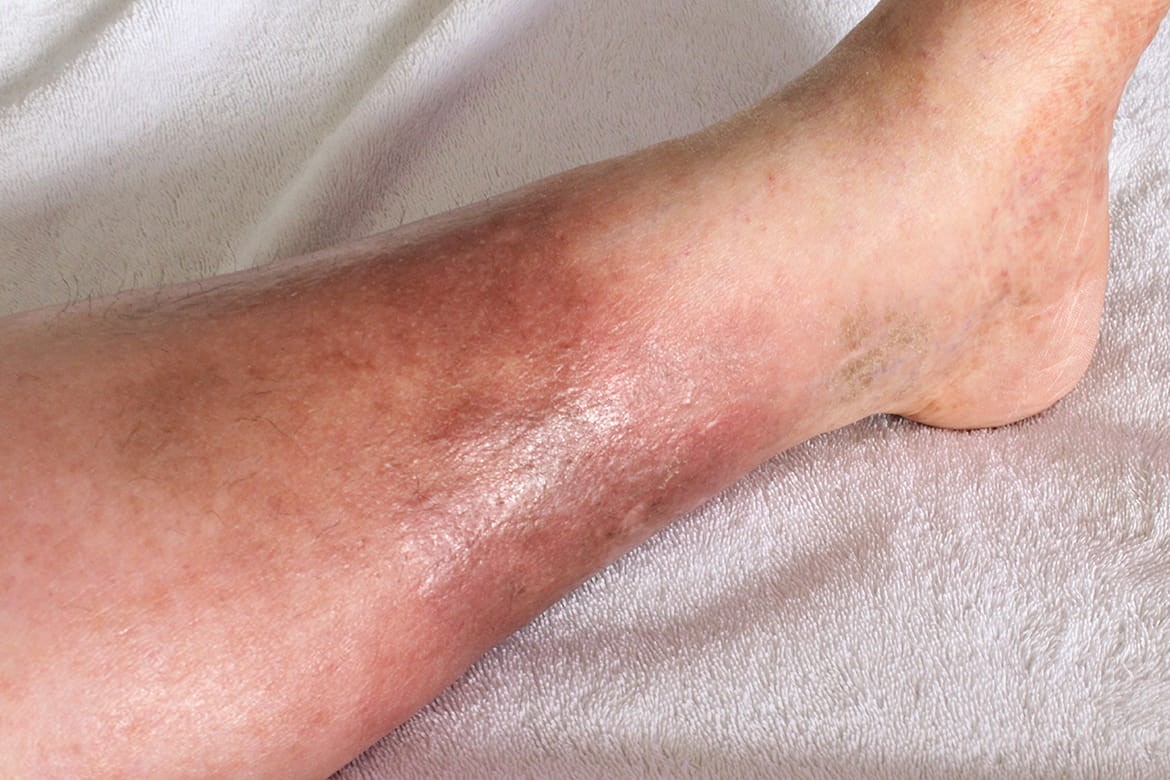
Infectious cellulitis: what is it? Diagnosis and treatment
Infectious cellulitis (not to be confused with so-called aesthetic cellulitis) is an acute or chronic infection of the dermis and subcutaneous tissue
Causes of infectious cellulitis
Rather common and usually caused by streptococcus or staphylococcus, infectious cellulitis occurs when the histological integrity is compromised as a consequence of skin lesions, micro-injuries, wounds, phlebopathy, peripheral venous insufficiency with dermal ulcerations: these histopathological conditions allow the bacteria physiologically present on the outer layer of the skin (such as streptococcus, staphylococcus, etc.) to penetrate deep into the skin, taking advantage of the fact that they are present in the skin’s surface. ) to penetrate deeply, taking advantage of the precarious state of the superficial immune system, and infect the skin and subcutaneous tissue.
Causes and risk factors of infectious cellulitis
Wounds, burns and even superficial lesions of the dermis, cracks, blisters, insect bites are a serious risk factor for infectious cellulitis because they act as ‘gateways’ for pathogens.
Among the most common risk factors are also needle-sticks: one type of infectious cellulitis is post-vaccinal infectious cellulitis caused by the micro-injuries caused by the needle, as a result of which inflammation and infection of the subcutaneous adipose and connective tissue due to pathogens occurs.
Similarly, intravenous drug users are at high risk of infectious cellulitis.
Signs and symptoms of infectious cellulitis
Infectious cellulitis presents as a red, painful, soft-touch, oedematous and hyperemic patch and may be accompanied by chills, fever and a general feeling of malaise.
It is usually localised to the lower limbs but other areas of the body are not excluded: some forms also affect the scalp, face and eyes. In more serious cases, the infection can spread to the lymph vessels, blood and other organs.
Diagnosis and treatment of infectious cellulitis
An initial diagnosis is made through anamnesis and physical examination, but a suspicion of infectious cellulitis can only be ascertained through blood tests and differential diagnosis by ultrasound, X-ray, biopsy, and culture examination to exclude other pathologies.
This type of cellulitis, which often relapses, must be taken very seriously and treated promptly with appropriate antibiotic therapy to act on the bacteria responsible for the infection, also for prophylactic purposes.
A poorly treated infectious form, in fact, can fester, affect the soft tissues and turn into necrotising fasciitis.
Read Also:
Emergency Live Even More…Live: Download The New Free App Of Your Newspaper For IOS And Android
Venous Thrombosis: From Symptoms To New Drugs
COVID-19, The Mechanism Of Arterial Thrombus Formation Discovered: The Study
The Incidence Of Deep Vein Thrombosis (DVT) In Patients With MIDLINE
Deep Vein Thrombosis Of The Upper Limbs: How To Deal With A Patient With Paget-Schroetter Syndrome
Knowing Thrombosis To Intervene On The Blood Clot
Venous Thrombosis: What It Is, How To Treat It And How To Prevent It
Pulmonary Thromboembolism And Deep Vein Thrombosis: Symptoms And Signs
Summer Heat And Thrombosis: Risks And Prevention
Deep Vein Thrombosis: Causes, Symptoms And Treatment
Thrombus: Causes, Classification, Venous, Arterial And Systemic Thrombosis
Chronic Venous Insufficiency: Symptoms, Treatment And Prevention


